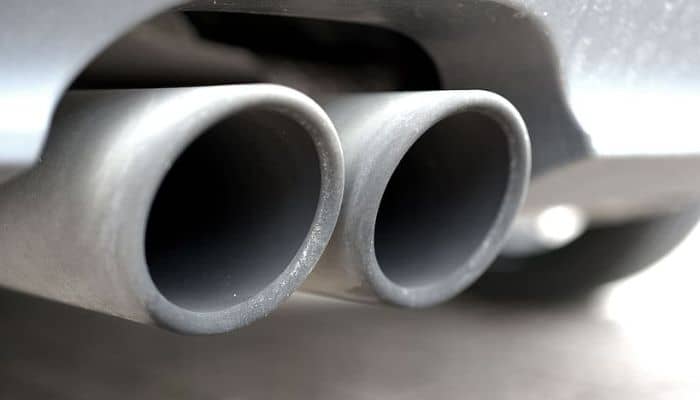An exhaust tip is the visible part of a vehicle’s exhaust system that protrudes from the rear of the car. It is responsible for directing exhaust gases away from the vehicle and reducing the amount of noise produced by the engine.
The material used in an exhaust tip can impact its durability, performance, and appearance. In this article, we’ll discuss the four most common materials used in exhaust tips and their pros and cons.
1. Stainless Steel Exhaust Tips
Stainless steel is a popular material for exhaust tips due to its durability, corrosion resistance, and affordability. It is a type of steel that contains at least 10.5% chromium, which creates a protective oxide layer on the surface, preventing rust and corrosion.
Stainless steel exhaust tips are available in various finishes, including polished, brushed, or black. They are also resistant to heat and can withstand high temperatures without discoloration or deformation. However, stainless steel exhaust tips are heavier than other materials, which can affect the vehicle’s performance.
Pros:
- Durable
- Corrosion-resistant
- Affordable
- Available in various finishes
- Resistant to heat
Cons:
- Heavy
2. Carbon Fiber Exhaust Tips
Carbon fiber is a lightweight, high-strength material made of thin fibers of carbon. It is commonly used in aerospace and motorsports industries due to its exceptional strength-to-weight ratio.
Carbon fiber exhaust tips are popular among car enthusiasts who want to reduce the overall weight of their vehicle while improving its performance. They are also heat-resistant and can withstand high temperatures without discoloration or deformation.
Carbon fiber exhaust tips come in a range of finishes, including matte and glossy. However, they are expensive compared to other materials, and their aesthetics may not appeal to everyone.
Pros:
- Lightweight
- High strength-to-weight ratio
- Heat-resistant
- Available in various finishes
Cons:
- Expensive
- Aesthetics may not appeal to everyone
3. Titanium Exhaust Tips
Titanium is a lightweight and high-strength material that is commonly used in aerospace and motorsports industries. It is also used in exhaust systems due to its high strength-to-weight ratio and resistance to corrosion.
Titanium exhaust tips are known for their durability and their ability to withstand extreme temperatures without deformation or discoloration.
They are also available in a range of finishes, including polished, brushed, or burnt. However, titanium is expensive compared to other materials, and its availability is limited.
Pros:
- Lightweight
- High strength-to-weight ratio
- Corrosion-resistant
- Durable
- Heat-resistant
- Available in various finishes
Cons:
- Expensive
- Availability is limited
4. Aluminum Exhaust Tips
Aluminum is a lightweight and affordable material that is commonly used in exhaust systems. It is also resistant to corrosion and can withstand high temperatures without discoloration or deformation.
Aluminum exhaust tips are available in various finishes, including polished, brushed, or black. However, aluminum is softer than other materials, which can lead to deformation over time. It is also more susceptible to corrosion compared to stainless steel.
Pros:
- Lightweight
- Affordable
- Corrosion-resistant
- Resistant to heat
- Available in various finishes
Cons:
- Softer than other materials
- More susceptible to corrosion compared to stainless steel
Conclusion
Choosing the right material for your exhaust tip depends on your personal preferences, budget, and the performance you’re looking to achieve. Stainless steel exhaust tips are a great option for those who want durability and affordability.
Carbon fiber exhaust tips are perfect for those who want to reduce the overall weight of their vehicle while improving its performance. Titanium exhaust tips are ideal for those who want to invest in a high-quality and durable exhaust system. Aluminum exhaust tips are an affordable option that can withstand high temperatures but may not be as durable as other materials.
Ultimately, the material you choose for your exhaust tip should be based on your individual needs and preferences. Consider factors such as cost, durability, heat resistance, and aesthetics when making your decision. By understanding the pros and cons of each material, you can make an informed decision and choose an exhaust tip that will meet your needs and enhance the overall performance and appearance of your vehicle.

